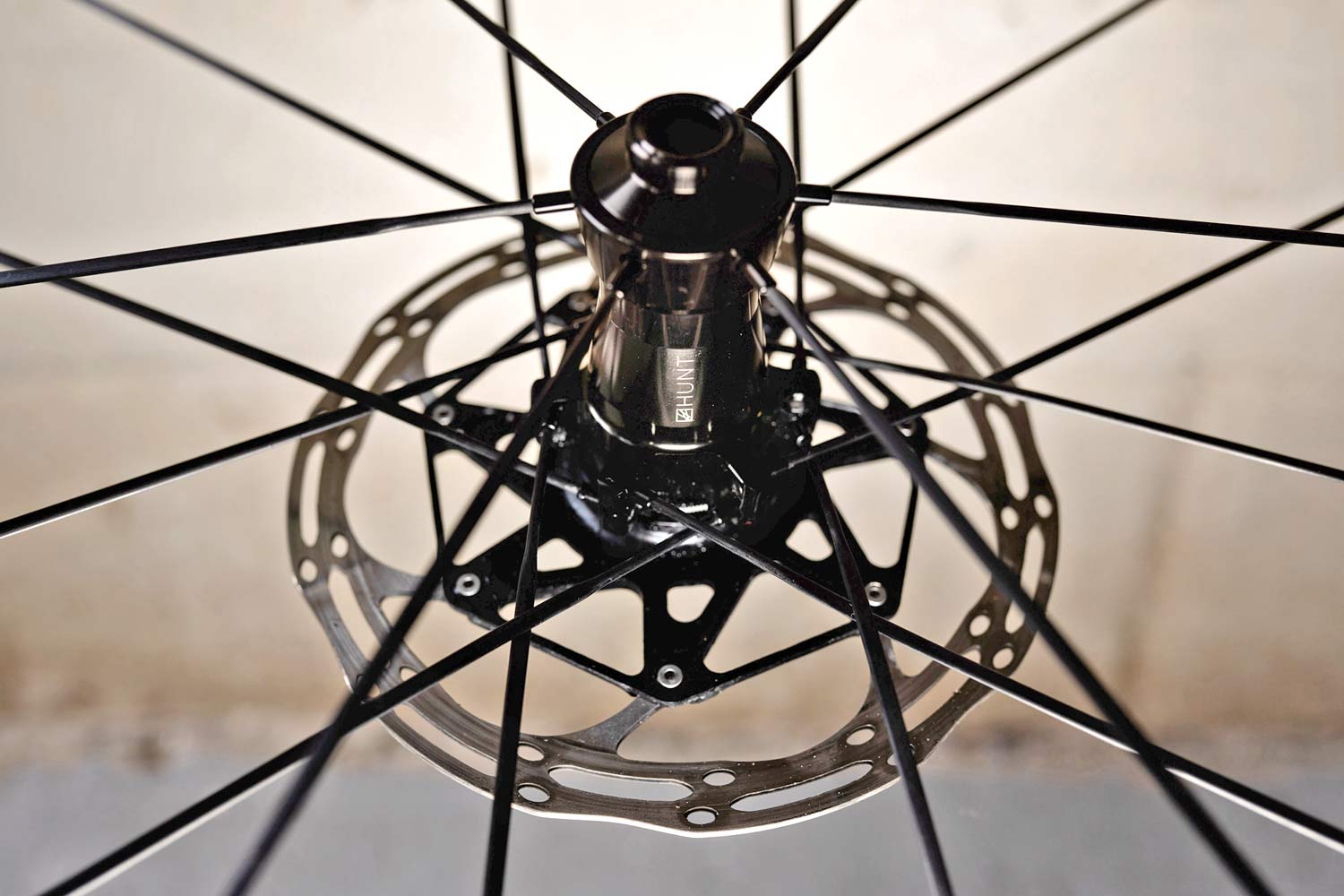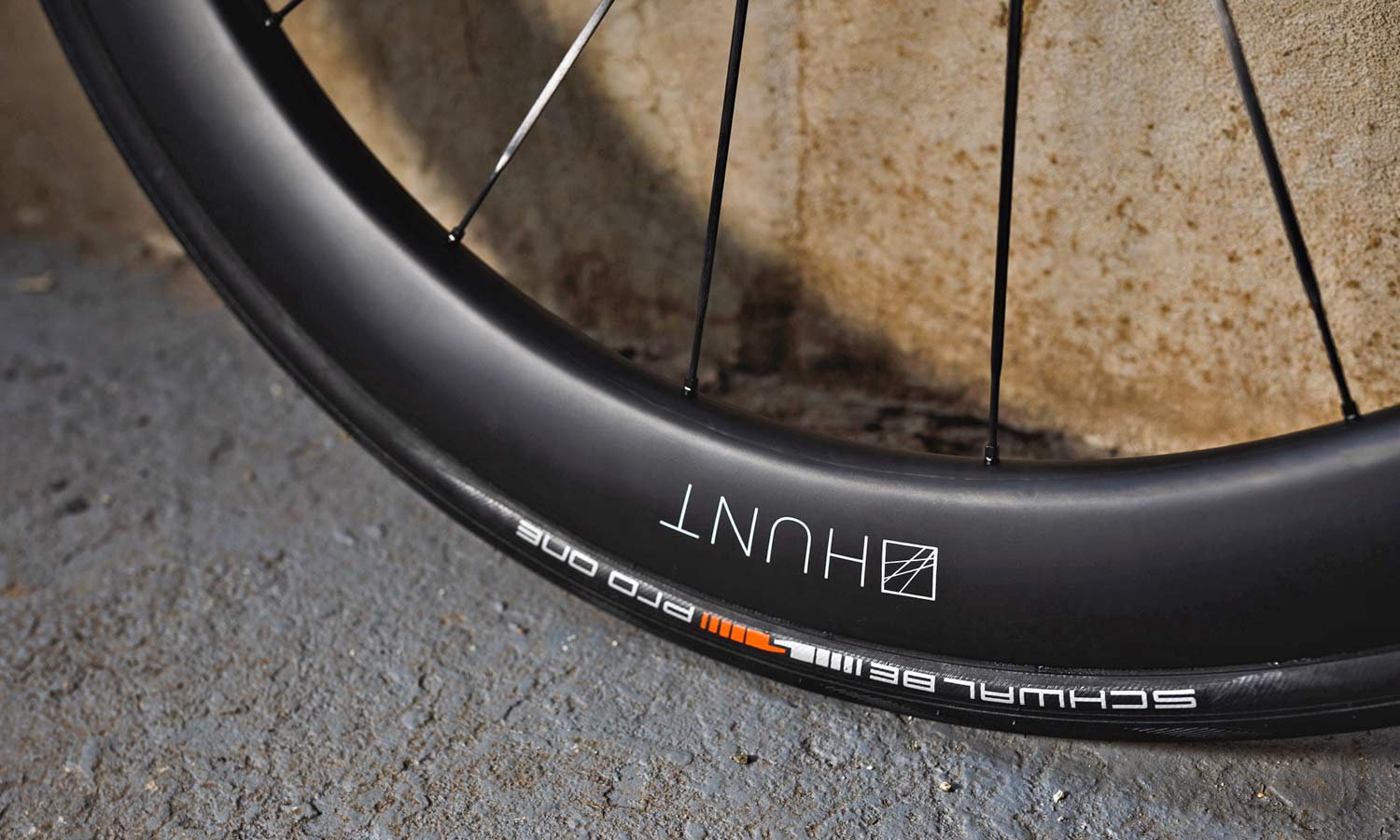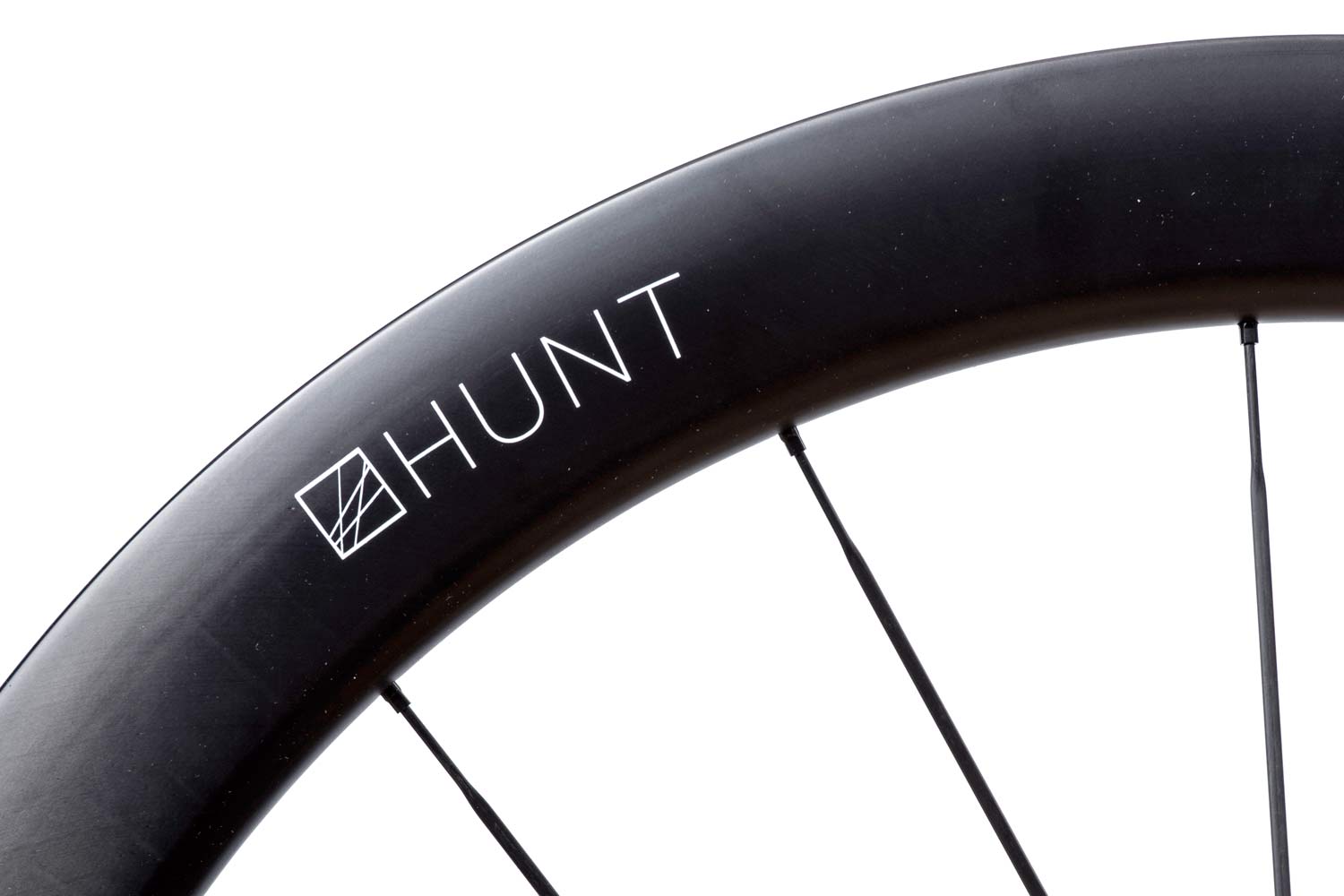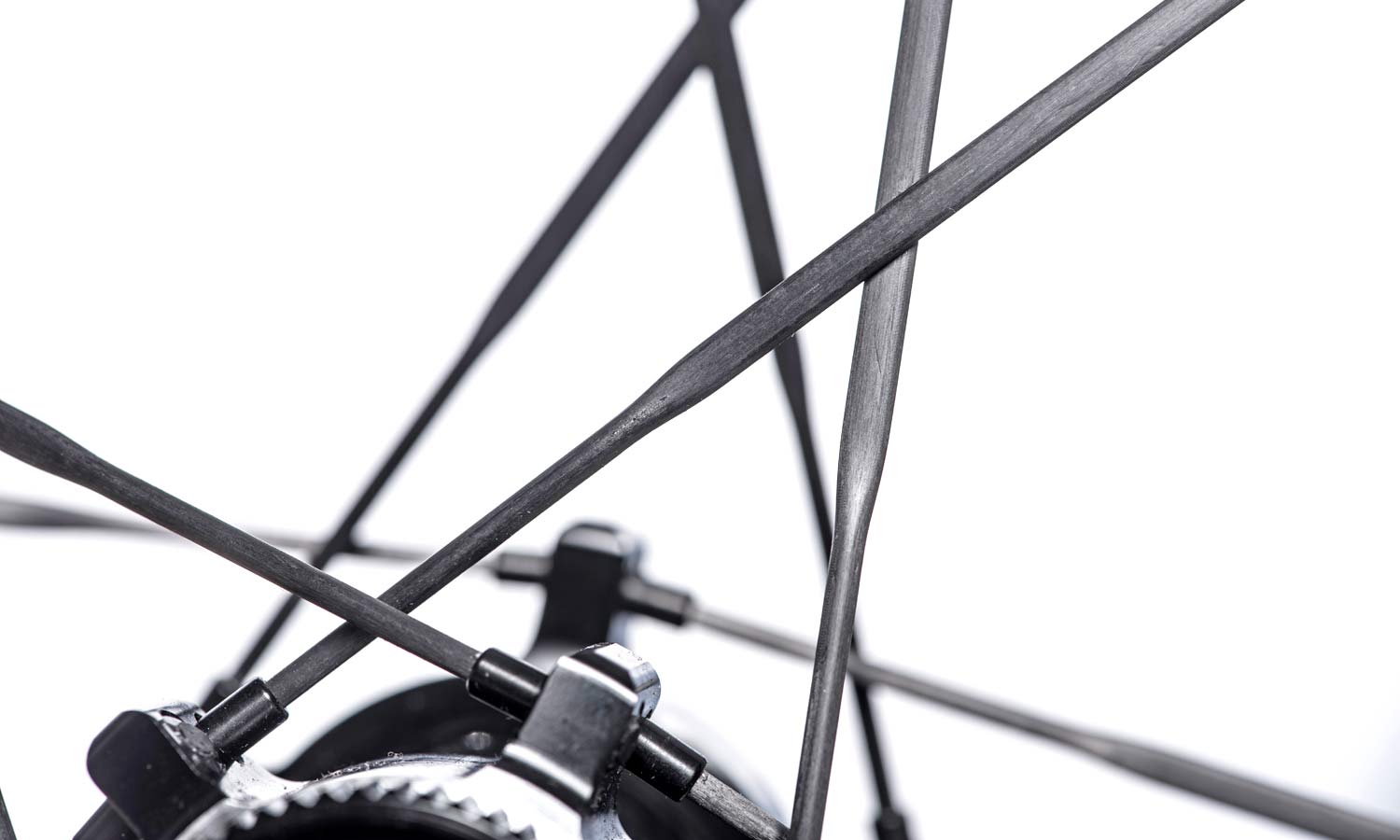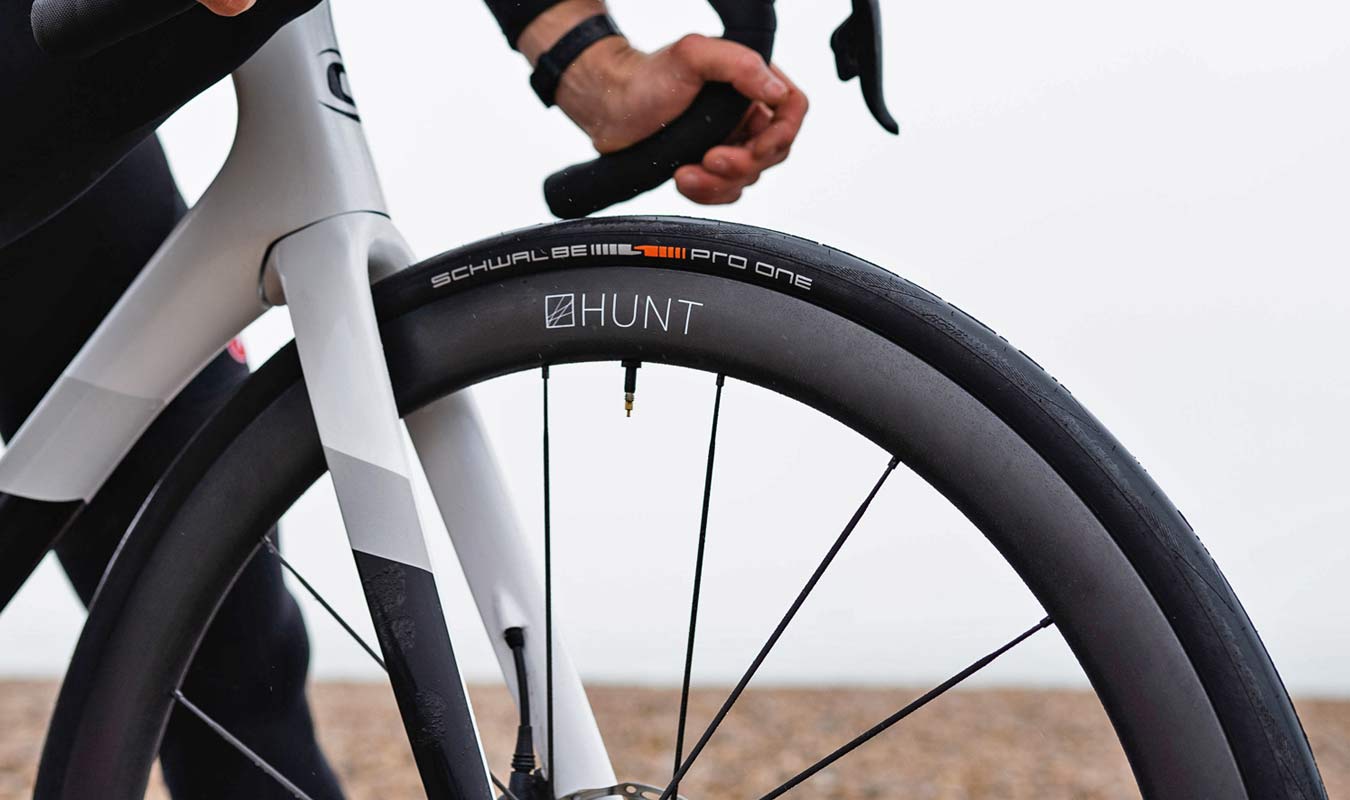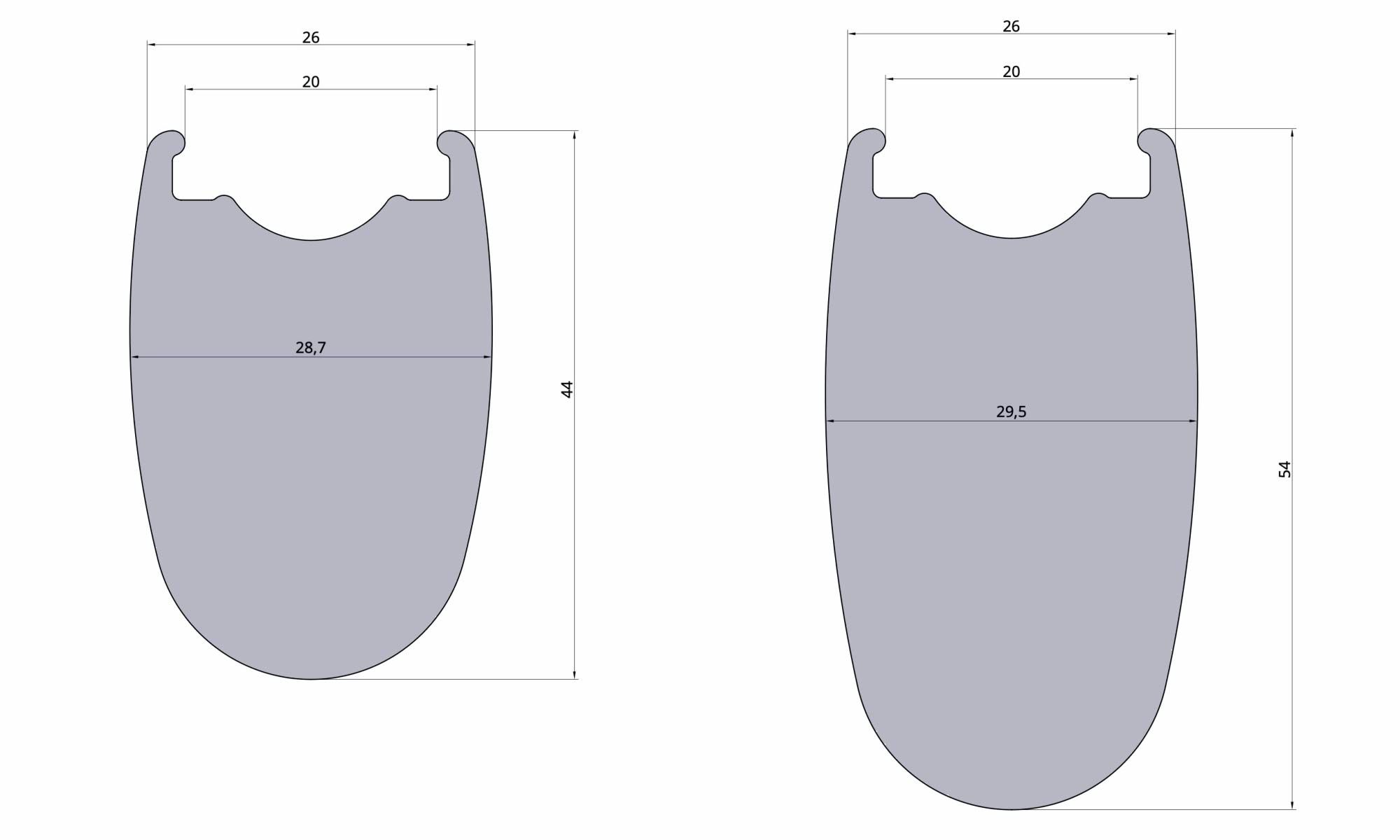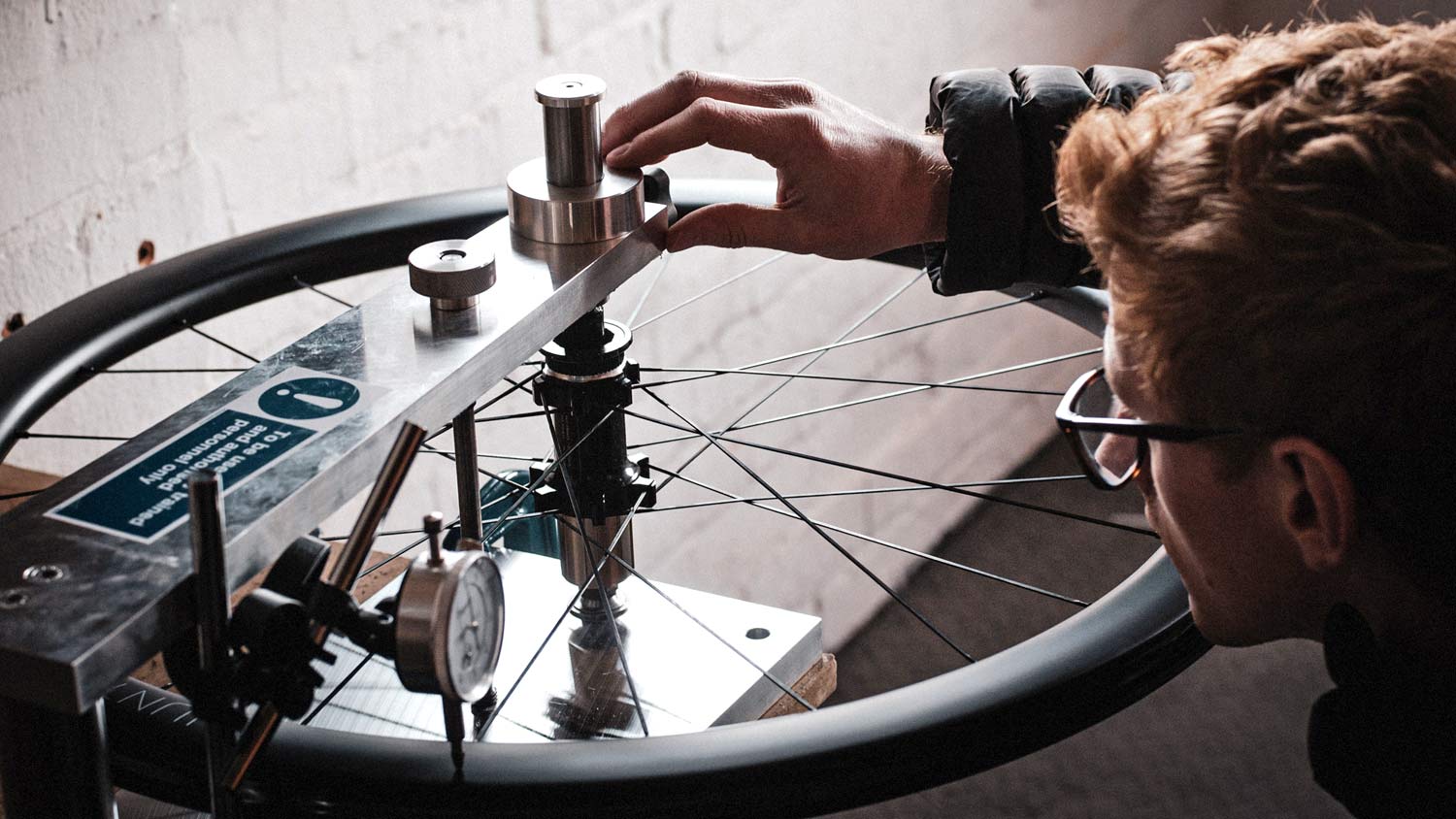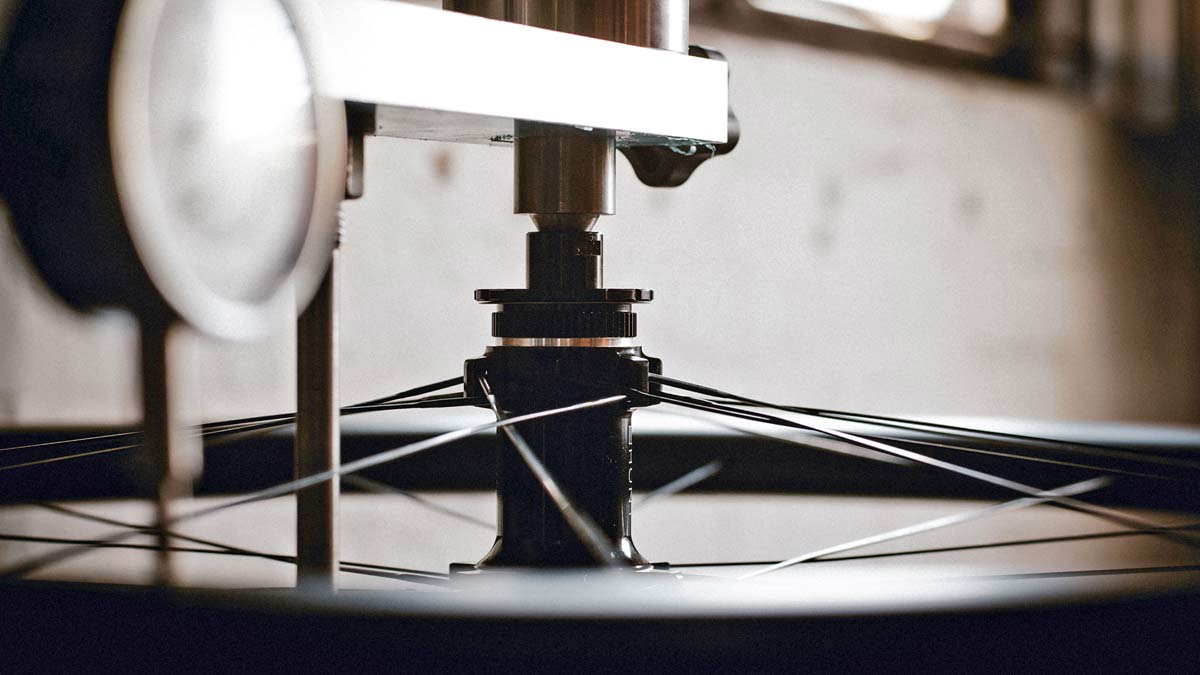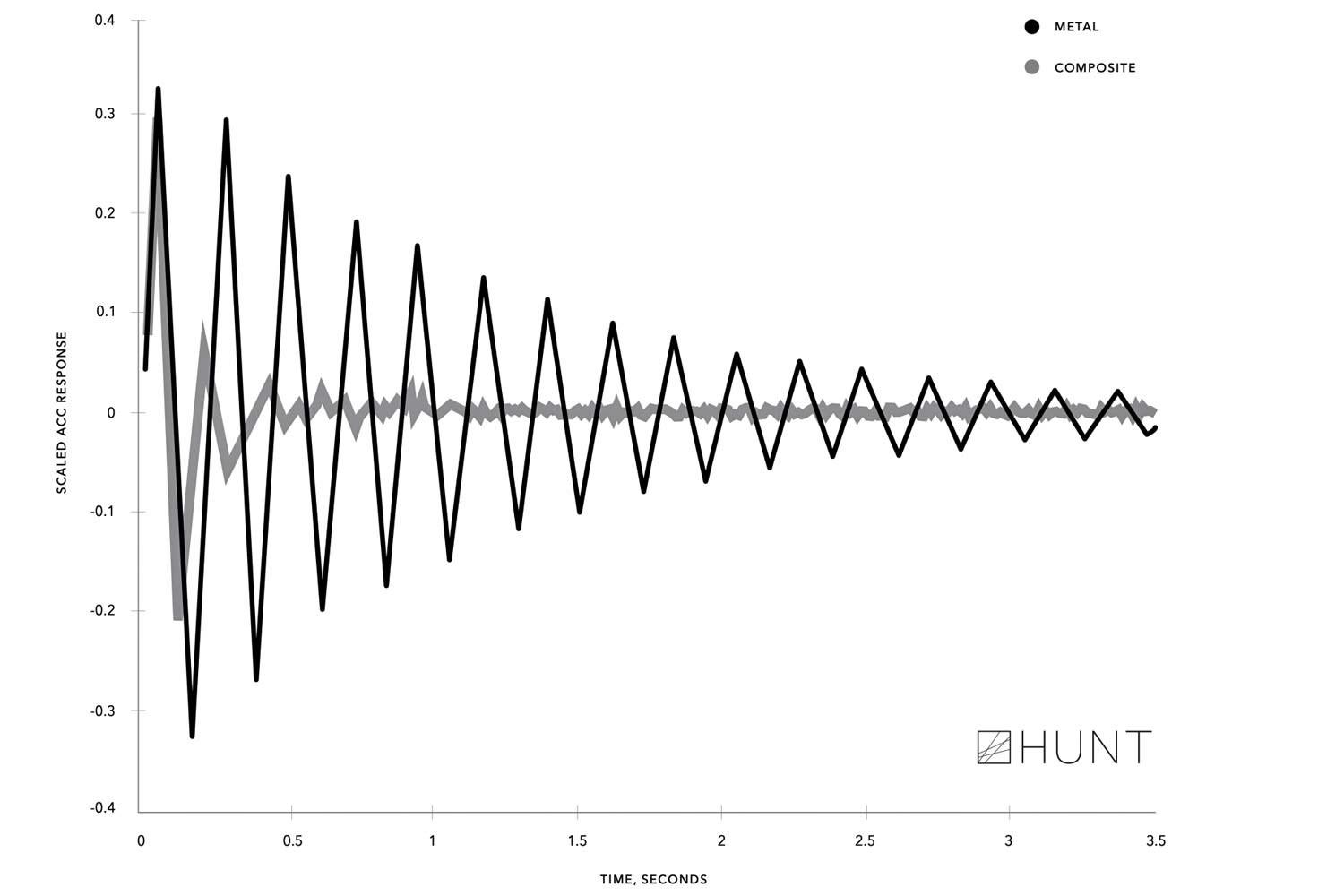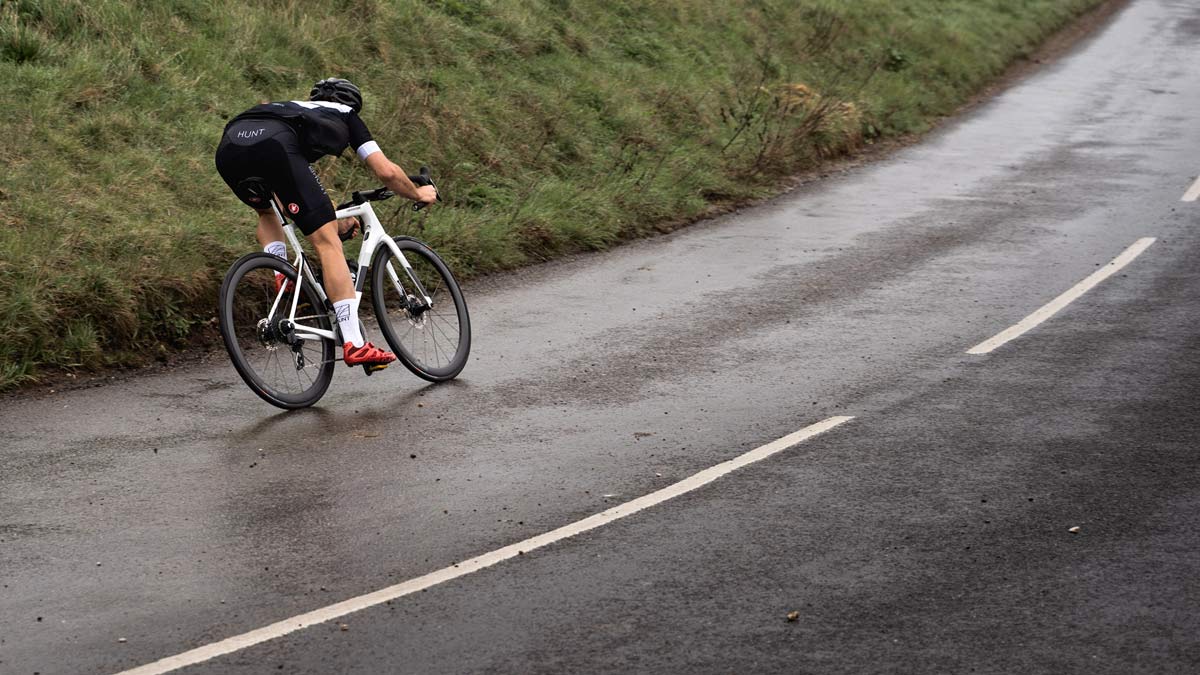Hunt Bike Wheels is back with more light, affordable high-performance aero carbon road wheels – the new 44 & 54 UD Carbon Spoke Disc. The name says it all… more of their unique TaperLock full-carbon spokes laced to either 44mm or 54mm deep tubeless-ready aero carbon rims & centerlock disc hubs, for what they call the “final word in road / all-road disc-brake performance.”
Hunt 44 & 54 UD Carbon Spoke Disc aero carbon road wheels
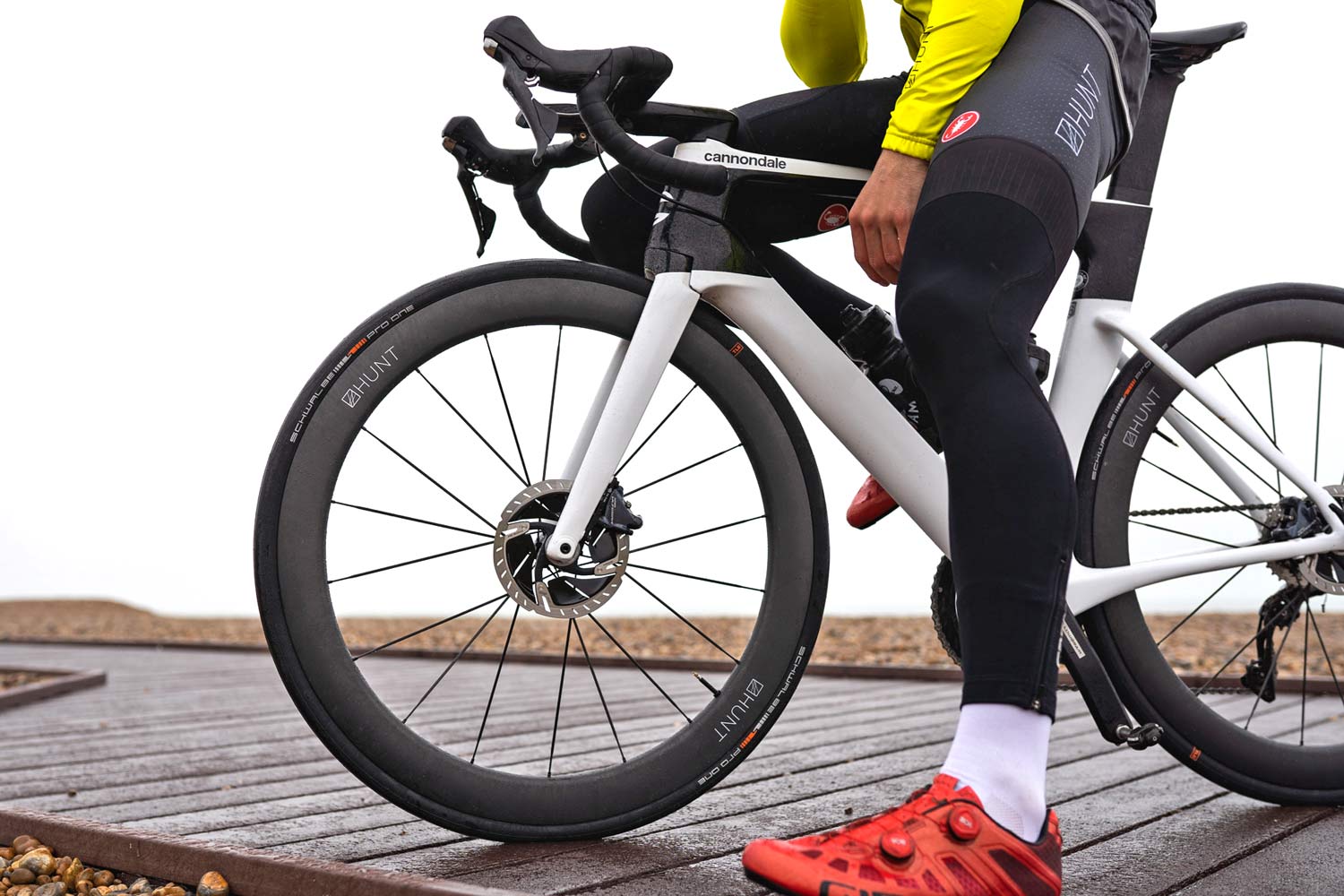
Built around lightweight, stiff bladed carbon spokes that can be trued or replaced and wind tunnel optimized rim shapes, Hunt’s newest 44 & 54 UD Carbon Spoke Disc aero carbon disc brake wheels promise to deliver the best performance you could hope for in a road or all-road wheelset, all at the relatively affordable price level that has always made them stand out from the crowd. Hunt’s ethos has always been about building affordable & serviceable wheels, but ever since they hired their own aero carbon engineer a few years back, they’ve been stepping up their game, as fast as they’ve been expanding their wheel offerings.
TaperLock carbon spokes
Just like we saw with our exclusive first look at their rim brake 36 UD Carbon Spoke wheels last autumn, the trick to these new disc brake wheels is the TaperLock carbon spoke tech that allows Hunt to build a wheel they claim to be “6% more laterally responsive than identical steel spoke wheel, with significantly less weight”. Plus, the carbon spokes are also said to work like the carbon rim to better damp high frequency vibration for a smoother ride and improved control.
TaperLock means that Hunt is working with carbon spokes that build up into wheels much like more conventional spokes thread-in, or rather more like textile spokes. Instead of being bonded (glued) into place, the full-carbon bladed aero spokes are molded with a taper on either end that can be mechanically wedged into a nipple.
In the center of the wheel an alloy nipple (mandrel) threads directly into the special hub, then a squared-off steel nipple pulls at the rim side. The square-sided external nipple is held in place with a tool, while the spoke is tensioned in place (and trued) from inside the rim bed by tightening an internal nut. Effectively that means the wheels are serviced like a wheel with internal nipples. But for a carbon-spoked wheel it’s quite unique that a damaged carbon spoke could be tensioned or even replaced at all.
Aerodynamicist hooked tubeless-ready aero carbon rims
The new wheels are more than just fancy spokes, they also get two new 29mm wide external, 20mm internal aero rims, developed in depths of 44mm and 54mm by Hunt’s Aerodynamicist engineer Luisa Grappone to optimize aero performance with realistic wind conditions and the 28mm tires used by the fastest modern roadies today. (Aero performance is best with a 25-28mm tire, but 23c tires will still fit, as will wider all-road tires.)
Much like the team learned in the wind tunnel on their Limitless Research project (which yielded the “the world’s fastest road disc brake wheels”) these new wheels benefit from the same blunt-nosed, wide rim profile concept.
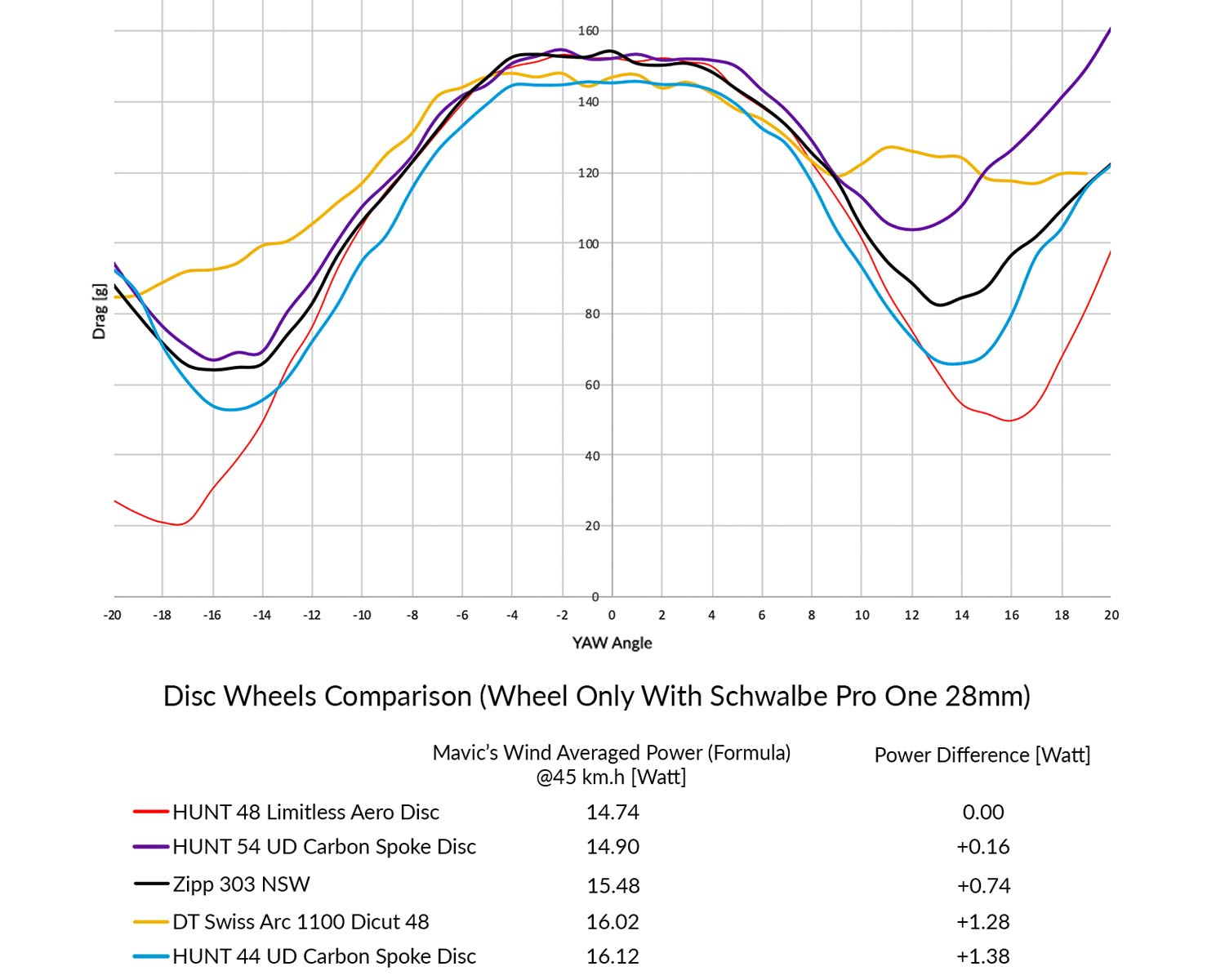
Resulting in more “predictable airflow” sticking to the spinning wheel both from leading & trailing edges, these two new rim profiles produce low drag results in the wind tunnel, even factoring in the extra drag that results from the side due to the wider & less aero carbon spokes.
Stiffness:Weight
The key rationale for the carbon spokes in the first place was to maximize stiffness and minimize weight. Hunt says increasing stiffness (or as they equate it to lateral responsiveness) improves performance by ‘helping maneuverability and efficient power transfer’. From a material perspective, choosing 2x stiffer carbon for spokes at 1/5 of the density over steel spokes meant Hunt could increase spoke stiffness on the order of 5-10x what they were used to. But to see how that really worked they wanted to accurately quantify the real differences in their built wheels.
So, they built the new 44 Aerodynamicist rim up in two configurations – one with these 20 carbon spokes and another with 24 of the more conventional steel spokes they use in their other premium wheels. Then, put both in their stiffness testing rig to see the difference in deflection. That direct result is 6% boost Hunt claims for the new wheels, even with 4 fewer spokes.
There’s also the claimed road buzz eating properties of carbon to contend with. Hunt claims that the frequency dependent loss coefficient of the lighter & stronger carbon is “well-tuned” to absorb high frequency vibrations, better than steel spokes can. That’s something we’ve heard and felt ourselves for years in carbon frames, forks, rims & occasionally with bonded-in carbon spoked wheels. And now Hunt says it plays an important role in absorbing vibration in their UD Carbon Spoke wheels, too.
Hunt 44 & 54 UD Carbon Spoke Disc – Tech Details
So, Hunt says the wheels are stiffer and light, but how light? At a claimed 1398g for a pair of 44mm deep wheels, that’s more than 200g lighter their 48 Limitless wheels. Step it up to the 54mm deep version at a claimed weight of 1456g (still 160g lighter.) The mixed 44/54 set unsurprisingly splits the difference at 1427g for the pair.
Those new carbon rims are constructed from a mix of Toray T700/T800 carbon fiber, with unidirectional (UD) sidewalls and 3K weave bed & spoke area reinforcement. The wheels are laced to TaperLock-specific versions of Hunt’s straight pull Sprint hubs with 18 spokes on the front wheel (2x on rotor side, radial on driveside) and 20 rear spokes (2x on both sides.)
Those hubs use 15mm 7075-T6 alloy axles, high-end sealed Japanese steel EZO bearings, and are compatible with all modern road thru-axle standards. Hub engagement is quick at 7.5° with 3x triple pawls, and feature steel spline insert reinforced cassette bodies, available for Shimano, Campagnolo, SRAM XD & XDR.
The Hunt UD Carbon Spoke Disc wheels are cobble-tested and rated for rider+bike weights up to 100kg (220lb).
Hunt’s new H_Care: Lifetime Crash Replacement
And besides being a serviceable, aerodynamic, lightweight & stiff wheelset… Hunt is giving even an extra bit of security with a new Lifetime Crash Replacement warranty for the original owners of these wheels, their other UD Carbon Spoke wheels and all of their other Aerodynamicist wheels. Their H_Care policy recognizes that even though Hunt designs their wheels to take a lot of everyday abuse, accidents happen. And Hunt wants to get riders rolling again. Hunt has a lot of faith in the quality of their product, and is backing it up now with an official policy.
This new replacement warranty “extends to any HUNT-branded/made parts of your wheels, and we’ll even perform the labour of rebuilding your beloved wheels free of charge”. All you would have to do is pay to ship the damage wheel back to their office for service. And as of March 23 (two days ago), that means either to West Sussex in the UK, or to the new office they just opened officially this week in Boulder, CO. They promise more info on their USA setup in the near future, but Americans can now rest assured that Hunt will look after you on home soil now, too.
Hunt 44 & 54 UD Carbon Spoke Disc – Pricing & Availability
The new Hunt UD Carbon Spoke Disc wheels come in three variants: a 44mm deep pair, a 54mm deep pair, or a mixed 44mm deep front & 54mm deep rear combo. Anyway you choose it, the price is the same: £1069 / $1299 / 1229€. Hunt will also set your new wheels up tubeless for you before they ship them out so you don’t have to deal with the hassle, for less than the retail price of the pair of tires alone.
As consumer-direct Hunt tend to do to drum up interest for their newest wheels, the UD Carbon Spoke Disc wheels go on pre-order today, with real consumer deliveries slated for the end of July 2020. You get the option to pay the full price of the wheels now, or you can also just put down a refundable £99 deposit if you want to secure a set from the first shipment. Then pay the remainder before they ship later this summer.
